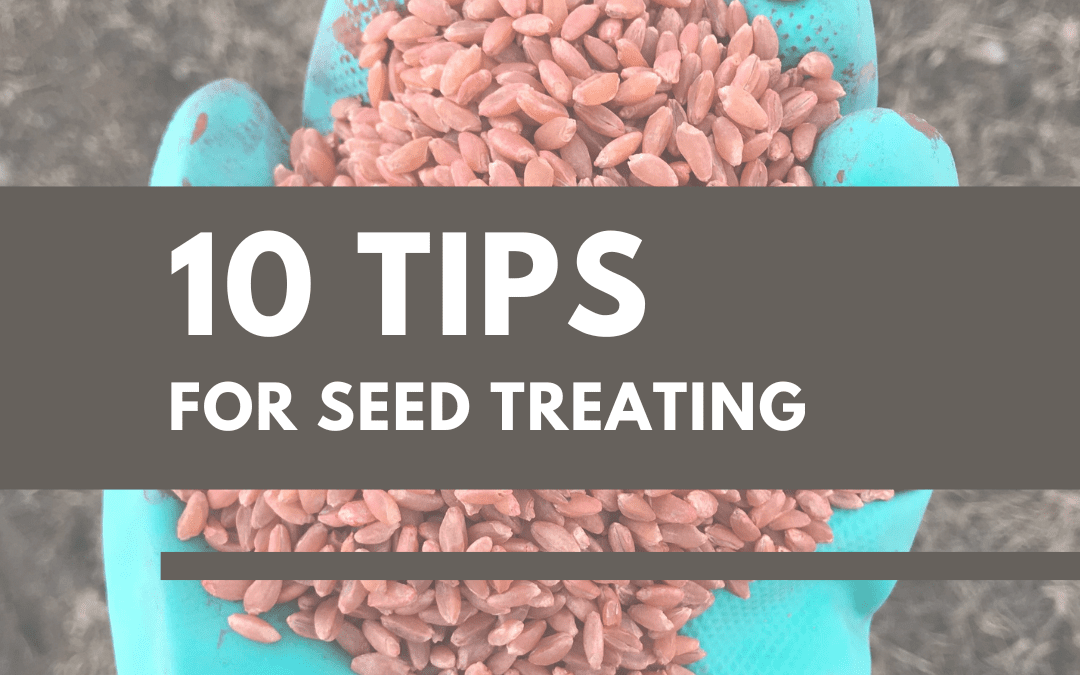With spring underway, seed treating is in full swing! To ensure that you achieve effective application of your seed treatment, consider the following guidelines:
1.Use high-quality, clean seed – Seed treatment can only do so much, and it’s important to start with high-quality seed that is free from disease, pests, and other contaminants.
2.Warm the seed prior to treatment – If seed treatment is applied to a cold seed, the product can harden and fail to transfer onto other seeds. In some cases, the seed treatment may even flake off, leading to incomplete coverage. To avoid these issues, it is recommended to warm up the seed before treatment. This can be achieved by turning on an aeration fan a couple of days before treatment or inverting the bin if there is no fan available. By taking these steps, the seed will be sufficiently warmed up, which will allow for effective and complete coverage during the treatment process.
3.Use protective equipment – Safety first! Seed treatments can be harmful if they come into contact with the skin or eyes, so it’s important to wear protective gear, including gloves and goggles, when handling and applying the product.
4.Follow the instructions – Seed treatment products come with specific instructions for mixing and application rates. Similar size jugs from different companies do not necessarily treat similar bushels. It’s important to carefully follow these instructions to ensure proper treatment and avoid overuse or waste of the product.
5.Mix/agitate prior to application – The active ingredients in seed treatment products can settle over time and may not be evenly distributed throughout the product. Agitating the seed treatment before and during application helps to ensure that the active ingredients are evenly distributed, which in turn results in consistent application rates and improved seed coverage.
6.Calibrate and find the right flow rate – Do not start treating with the seed treater at 100% capacity! Calibration and proper flow rate during seed treating is essential for achieving accurate and uniform application rates. Factors that can impact the flow rate include the viscosity of the product, the size of the seed, and the calibration of the treating equipment. Refer to the manufacturer’s instructions and calibrate the equipment properly to ensure that the flow rate is appropriate for the seed and product being used.
7.Be mindful of the fill – For most seed treating systems, achieving proper coverage is dependent on seed-to-seed contact. If the auger is run either too full or too empty, the seed treatment coverage may be inadequate. The recommended amount for optimal coverage is to fill the auger to half to two-thirds full.
8.Consider environmental conditions – Seed treatment products can be affected by temperature, humidity, and other environmental factors, so it’s important to consider these conditions when selecting a product and during application.
9.Store treated seed properly – Treated seed should be stored in a cool, dry place away from direct sunlight and moisture to maintain the integrity of the treatment and prevent mold or other issues.
10.Keep records – Keeping accurate records of products and application rates can help with future crop planning and provide a history of treatment for future reference.
If you have any questions or concerns about your seed treatment, feel free to reach out to your local HFL sales agronomist!


